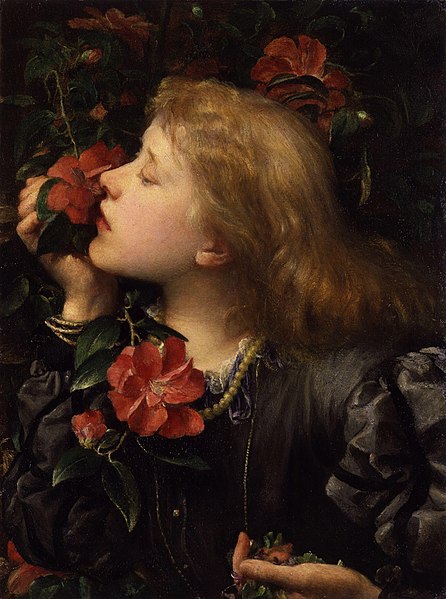George Frederic Watts OM RA (1817-1904)
In
his own lifetime George Frederic Watts (1817-1904), was widely considered to be
the greatest painter of the Victorian age, enjoying an unparalleled reputation.
His ceaseless experimentation embodied the most pressing themes and ideas of
the time. A complex figure, Watts was the finest and most penetrating
portraitist of his age, a sculptor, landscape painter and symbolist which
earned him the title ‘England’s Michelangelo.
His
fame and renown was not limited to Britain and in 1884 he was the first living
artist to have a solo exhibition at the Metropolitan Museum of Art, New York, a
show so enormously successful that it led to a longer run and a gift of his
great work, Love and Life to the American people. His works also found great
favour in Europe winning gold medals at the Paris Universal Exhibitions in 1878
and 1889. His influence among symbolists was profound and can be seen in the
works of Gustave Moreau and Fernand Knopff
The work of G F Watts
is of seminal importance in understanding the Victorian period because he was
one of its most notable artistic innovators. Watts’s own refusal to become part
of any painting movement coupled with the reaction of early twentieth century
critics to all things Victorian left his reputation a little tarnished.
Ironically, that outspoken critic of Victorian painting, Roger Fry, considered
Watts an exception. Fry recognized his great importance within the British
School, as shown by his visits with his students to the Watts Picture Gallery.
Until the late 1930s, the Tate Gallery had a Watts room which exclusively
showed the work of the artist. The legacy of his Hall of Fame portraits form a
major part of the National Portrait Gallery’s nineteenth century holdings and
the Tate Gallery’s huge collection are a tribute to his importance.
 |
| Hope--his most famous painting |
He painted many “social justice” paintings and many of his
worries about the homeless and the poor are as relevant today as they were
then. His paintings could be photographs from today.
 |
| Found Drowned--she has a locket in her hand from her lover who abandoned her |
 |
| Under a Dry Arch--where the homeless *still* sleep |
 |
| Ophelia--about to drown herself |
He was a progressive guy and one of the founding members of
the Society For the Protection of Birds (later to become the RSPB) and he once
removed a feather from the hat of Lillie Langtry when she sat for a portrait
because “no exotic bird should have to die so that women might decorate their
hats with the plumage.”
 |
| A Dedication--an angel weeps over the feathers of dead birds used in the millinery trade |
 |
| my favourite Greek myth
Lastly, my favourite painting—one that I recall seeing in
1990 when we exchange students—is called Choosing. According to http://www.wattsgallery.org.uk
This delicate yet sensuous portrait shows the
seventeen-year-old Ellen Terry choosing between the camellias, which despite
their luscious appearance have little scent, and the violets in her hand which
are far humbler in appearance but smell sweeter. The choice, which is symbolic
of that between worldly vanities and higher virtues, had a personal
significance for the artist and the sitter. 1864 was the year in which Terry
gave up the stage to marry Watts, thirty years her senior, and to be educated
by him. The marriage lasted barely a year, and despite Watts's disapproval,
Terry eventually returned to the stage
 |
There was also a mini Charles Dickens’s exhibit entitled Dickens and the Artists which was very
interesting.
Plus we saw there will be an Eleanor
Fortescue Brickdale exhibit February of 2013 so we know we’ll be there!
Loved every single entry in the Spoiled Rotten series. Your life is so full and rich and that makes me happy.
ReplyDeleteGreat post. Thanks for giving us more ideas on clothings. polychrome
ReplyDelete